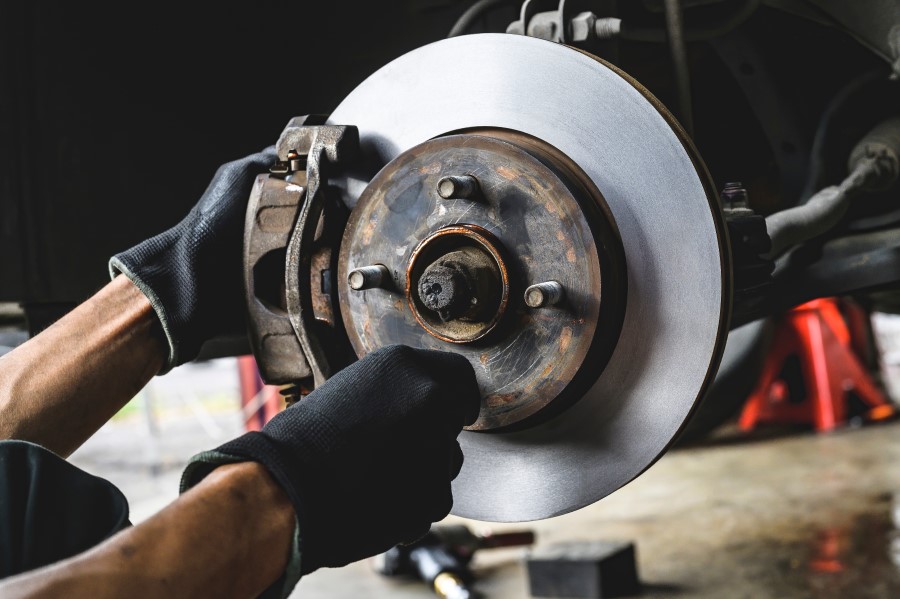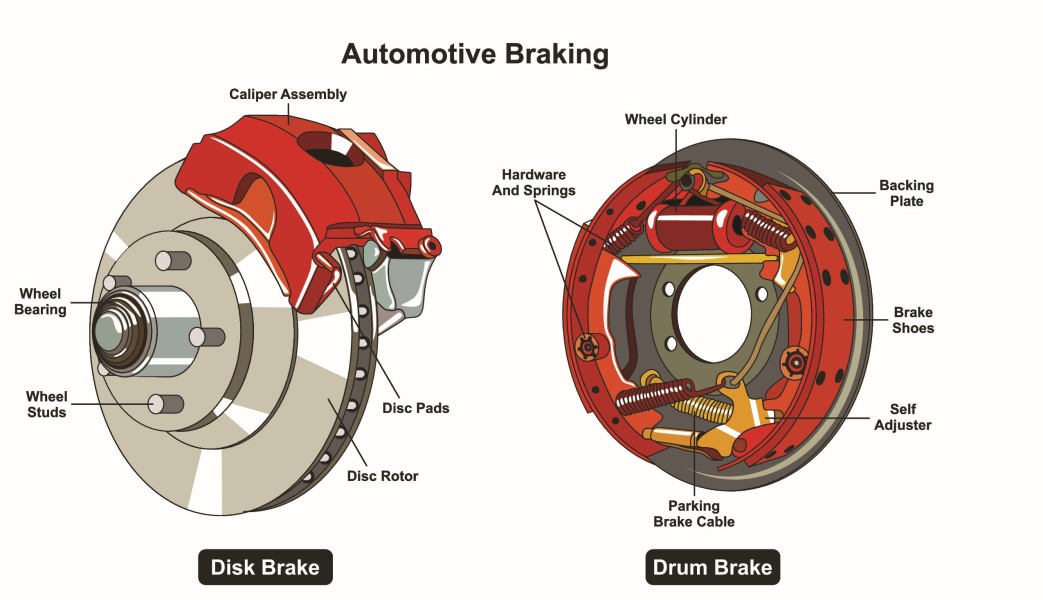
How Your Brake System Works
How Your Brake System Works: Basic Parts + Maintenance Tips
How a car’s brake system works is something that every vehicle owner should know. This knowledge is imperative when your car brake system calls for maintenance or repair along the way. In this blog, we’ll walk you through how your brake system works and touch on:
- What Is The Function Of A Brake System?
- What Are The Basic Parts of A Brake System?
- What Are The Different Types of Brakes?
- Brake System Maintenance
What Is The Function of A Brake System?
Friction is needed to decelerate when you need to stop your car. Deceleration occurs when the brake system generates enough pressure on the wheel. The force isn’t directly applied to the wheel but on the brakes located in each wheel instead to prevent damage.
Before we’ve come to how brake systems are built nowadays, other types existed like mechanical brakes. All previous models are out of date but the hydraulic brake system which is the one used nowadays. The hydraulic brake system offers many benefits because it rarely ruptures, doesn’t require much maintenance, and calls for little pressure from the pedal.
What Are The Basic Parts Of A Brake System

Your hydraulic brake system has some essential components or parts it needs to work adequately. Here you’ll learn which ones these are and each of their functions:
- Brake Pedal: The entire process to stop your car starts with the brake pedal or the emergency brake. These two are also known as the apply brake system because you, the driver, apply mechanical force to them. The mechanical force applied to the pedal is then applied to the pushrod.
- Push Rod: The pushrod is part of the brake boost system, which will amplify the force you apply so that there is enough force to stop. Its particular function is to transport the force applied into the servo.
- Servo: This component is the one in charge of augmenting the force into the braking system.
- Master Cylinder: Here is where the actual brake hydraulic system starts. Non-hydraulic pressure is converted into hydraulic pressure by the pistons located in the master cylinder. It pressurizes the entire brake system by distributing the brake fluid into the hydraulic lines when it creates hydraulic force. When pressure is released, the brake fluid returns to the master cylinder.
- Reservoir: A reservoir connected to the master cylinder is also part of the hydraulic brake system, which holds enough brake fluid to prevent air from entering the system.
- Hydraulic Lines: The lines go from the master cylinder into all four brakes in the wheels. They carry the hydraulic pressure to the front and rear brakes.
- Wheel Brakes: The hydraulic pressure in the wheel brake is transformed into friction so that your car can stop. The force moves a piston that pushes a brake pad against the drum or rotor.
- Brake Control System: Your brake system counts on metering and proportioning valves and anti-lock braking system components to balance the hydraulic pressure. These are all part of the control system.
- Brake Warning Lines: They turn on whenever there is a failure in your brake system.
What Are The Different Types of Brakes
Even though we only see hydraulic brake systems nowadays, two types of wheel brakes are still used:
- Drum Brakes: Drum brakes are attached to the wheel and have heat-resistant pads inside, which are squeezed up against the drum when you hit the brake pedal.
- Disc Brakes: These disks or rotors are attached to the wheel and ride inside a caliper, squeezing brake pads against the rotor. They stop and cool off better with air because they are outside.
Disc brakes are the most common in vehicles because they cool better, preventing excessive wear from heating them as drum brakes would. However, drum brakes are still used.
Brake System Maintenance
There is an entire process behind the simple act of hitting your pedal brake to stop your car. Ensuring all brake system components are in good shape is essential for your safety. You can’t miss brake system maintenance. You can take preventative actions based on all we’ve learned about the parts of a brake system:
- Brake disc replacement: Brakes are meant to stop your wheel from wearing down by the friction applied, but it also takes a toll on them eventually. Replace your brake discs when they wear out.
- Brake pad or rotor replacement: Brake pads get heated up and aren’t as easy to cool down vs. disc brakes. Because of this, you may want to get them inspected and replaced if necessary.
- Brake fluid replacement: Brake fluid has to be replaced every four to five years. It is best to have an auto mechanic diagnosis to replace the brake fluid when needed.
- Brake lines bleeding: The reservoir should hold enough brake fluid to stop air from entering the brake lines, but it can still get in. Suppose you notice the efficacy of your system has decreased. In that case, a professional auto mechanic may bleed the brake lines to eliminate air.
Now that you understand your car’s brake system better, it will be a lot easier to care for it and understand what is happening. Still, it is always imperative to rely on a professional auto mechanic to diagnose and service your brake system. If you require assistance at Amarz Auto Service, we are ready to help. Contact us today!
